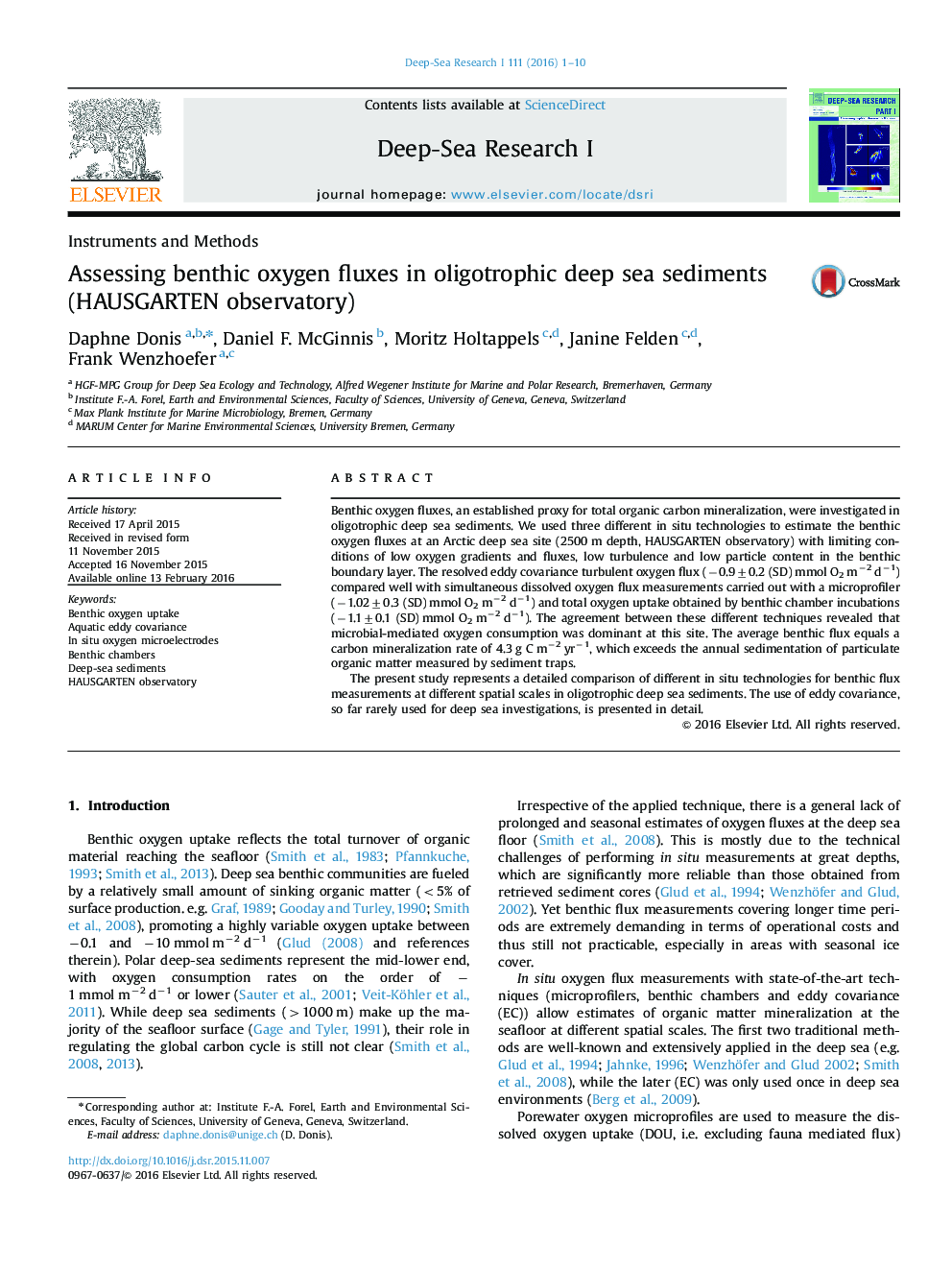| Article ID | Journal | Published Year | Pages | File Type |
|---|---|---|---|---|
| 4534433 | Deep Sea Research Part I: Oceanographic Research Papers | 2016 | 10 Pages |
•Procedures for processing benthic oxygen fluxes from oligotrophic environments.•Limitations for eddy covariance, benthic chambers and microprofiler measurements.•Good agreement between benthic oxygen fluxes obtained with three different methods.•At HAUSGARTEN 2500 m depth station sediment respiration is dominated by prokaryotes.•Measured benthic oxygen fluxes (July 2011) 5 times higher than previous measurements.
Benthic oxygen fluxes, an established proxy for total organic carbon mineralization, were investigated in oligotrophic deep sea sediments. We used three different in situ technologies to estimate the benthic oxygen fluxes at an Arctic deep sea site (2500 m depth, HAUSGARTEN observatory) with limiting conditions of low oxygen gradients and fluxes, low turbulence and low particle content in the benthic boundary layer. The resolved eddy covariance turbulent oxygen flux (−0.9±0.2 (SD) mmol O2 m−2 d−1) compared well with simultaneous dissolved oxygen flux measurements carried out with a microprofiler (−1.02±0.3 (SD) mmol O2 m−2 d−1) and total oxygen uptake obtained by benthic chamber incubations (−1.1±0.1 (SD) mmol O2 m−2 d−1). The agreement between these different techniques revealed that microbial-mediated oxygen consumption was dominant at this site. The average benthic flux equals a carbon mineralization rate of 4.3 g C m−2 yr−1, which exceeds the annual sedimentation of particulate organic matter measured by sediment traps.The present study represents a detailed comparison of different in situ technologies for benthic flux measurements at different spatial scales in oligotrophic deep sea sediments. The use of eddy covariance, so far rarely used for deep sea investigations, is presented in detail.
